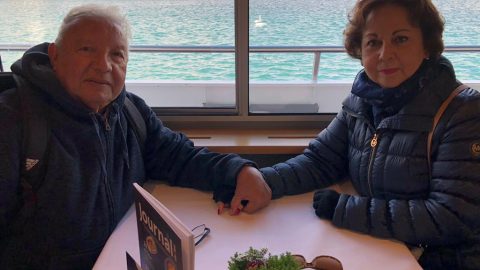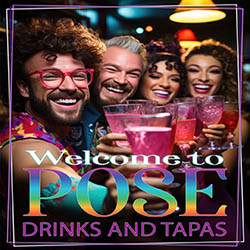The sun is the source of energy; when man dies he blends into the earth and his energy feeds the sun. Do not mourn as the journey continues through the cosmos’, thus was the general belief in pre-Hispanic Mexico.
A phosphorescent carpet of zempasúchitl flowers (marigolds) leads the way to the altars. The offerings must include the four elements: water, earth, wind and fire. No offering is complete without them. Water, to quench the thirst after the long journey; bread and food, made with products earth provides; wind moves the colorful and cheerful chiseled paper; and, the purifying fire in the candles. At midnight, November 1st., the souls of departed children leave their relatives and are bid farewell with slow and rhythmical sounds of church bells. Adults are then welcomed after a long journey. In Mixquic, southeast of Mexico City, the dead are honored in the cemetery and at night on November 2 the gloominess is gone when all candles are lit, the ceremony is known as “La Alumbrada”, . It is said that the Aztec Lady of Death, Mictecacíhuatl, roams the land and is visible only on November 1st and 2nd. Thus the millenary tradition is also alive San Luis Potosí, where one week earlier preparations begin, placing altars that will have tamales, chocolate, bread, chichiles, pemoles, atole, liquor; when dancers known as “huehues”, go to the cemetery to ask the dead for permission to honor them. In Oaxaca preparations begin mid-October, gathering all the products that will be placed in the altars and on November 1st it is customary to present the family and friends of the departed ones with food that will also be part of the offerings in the altars. In this predominantly indigenous state, ethnic groups honor their dead dinking mezcal, along traditional music, dances, chants and mass: In Miahuatlán, en route to the coast Oaxaca, dead are paid so much respect that since October 15 cemeteries are filled with flowers and food. November 1 and 2 in Oaxaca, are solemn but also festive, not only for the dead but also for the living; a Carnival takes place with troupes wearing elaborate masks and costumes of devils and death, dancing though the streets. As it happens in many other regions, in Pomuch, State of Campeche, since October 26 tombs are cleaned, as it is believed that the dearly departed will not visit if the remains are not clean.
In the Maya tradition, death is just another phase of existence to look into the past and move forward onto another world. The center of the universe was represented by the Yaxché, Ceiba, sacred and wise tree of life whose branches supported the thirteen levels of heaven and its roots were the nine levels of the underworld (Mitnal for the Maya of Yucatán and Xibalbá, for the Maya Quiché). Life was shaped by the Pixan, a gift from the gods, the vital fluid and the element that would travel to the underworld at the time of physical death. By a combination of pagan and religious rituals, the dead are “given permission” to abandon the great beyond and roam around looking for their homes, families and lands. Thus, when they find them, they are welcomed to the Hanal Pixan, the Meal for the Spirits. This age-old special feast and ritual to the Dead, from October 31 to November 2, still takes place in the States of Yucatán, Quintana Roo and Campeche. The first day is dedicated to departed children who appear on the early hours and is known as U Hanal Palal; they are offered atole and boiled corn. The second day awaits another reception the U Hanal Nucuch Uinicoob, for the adults, when the offerings are more elaborate: maize tamales, poultry and pork meat with chili pepper sauce and spices (mukbil pollo, in Maya), chocolate, fruits, squash dessert, bread, beans, amongst others. And on the third day, a mass dedicated to the souls, usually in the cemeteries, U Hanal Pixanoob also known in some places as the Pixan Mass. Prayers are done in absolute peace for the dead and for those still living. The dearly departed come to eat, drink, share gifts, and once satisfied return to their eternal abode. They will return next year, in a permanent cycle that keeps life and death closely linked. All the family participates in this feast; women are in charge of preparing the food and the altars with the offerings. Men dig holes, pib, in the ground for the mukbil pollo, a large cake-like dish made of corn, lard, stuffed with chicken, pig and spiced with tomato and chili pepper; then wrapped in huge banana leaves (like the tamales) and cooked underground or in the oven for around 2 hours. On the table covered with a white tablecloth with colorful embroidery, a cross, images of saints, pictures of the departed, yellow xpujuk (marigolds or flower of the dead) flowers, candles, incense, water, marzipan, bread, mukbil pollo, Brazo de Reina (corn dough stuffed with annatto –axiote– chicken and buried in the pib), beans, relleno negro, chilmole, cacao, chocolate, bread, vaporcitos (steamed tamales); balche , the Maya liquor par excellence, xtabentún, sugar, salt, etc. Oddly as it may seem, unlike other central regions in Mexico, no skulls are part of the offerings. After the souls have been satiated, families and friends share the food. In the Yucatán peninsula an eight day (“ochovario”) celebration, Bix, continues as a less complicated repetition of the former one; homes light candles so the spirits may see their path as they leave. For several years now, the Hanal Pixan in Merida is also celebrated at the Plaza Grande with a large display of altars . The mysticism involved in this celebration is based not only in food offerings, but in the joy of knowing that the essence of the dearly departed visit the world of the living; a combination of nostalgia and happiness.
In his book the Labyrinth of Solitude, acclaimed Nobel Prize writer Octavio Paz described the particular relationship of the Mexican culture with death: ‘The Mexican revisits death, jokes about it, caresses it, sleeps with it, celebrates it; it is one of the favorite toys and a steady love’. Many are the traditions and customs all around Mexico, where the religious mysticism of this 3000 year old celebration, is a magical reunion with the dead. The dead will again be missed but will return year after year, even if only for a few hours, to where, in life, was their home.
- HammocksYucatan Monica Sauza - February 8, 2024
- Holidays Mexico 2024 - January 4, 2024
- Christmas Mexico Monica Sauza - December 21, 2023

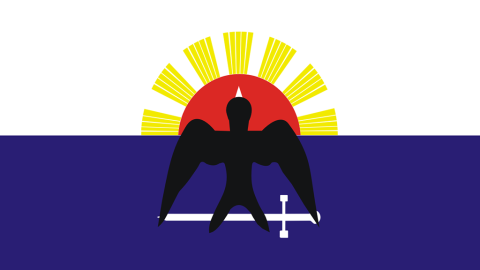
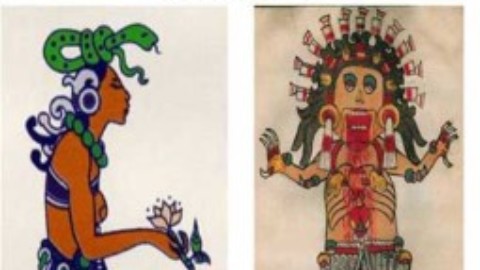
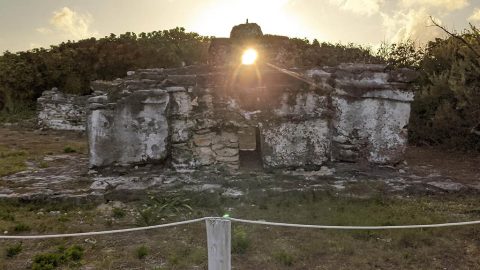
:quality(70)/cloudfront-us-east-1.images.arcpublishing.com/elfinanciero/34PAUUI3TBDXTLOGZ6TPX67XOA.jpeg)

